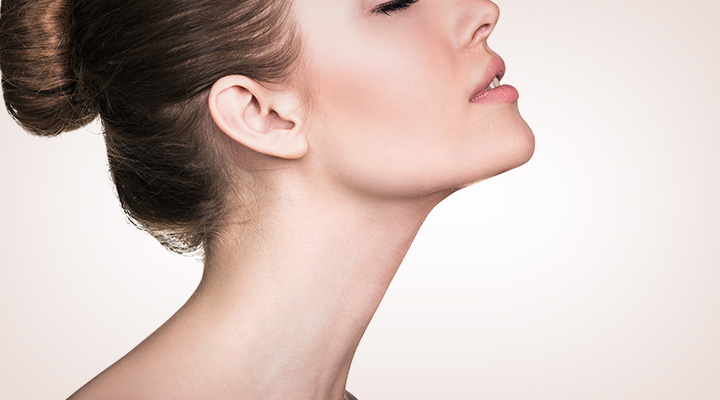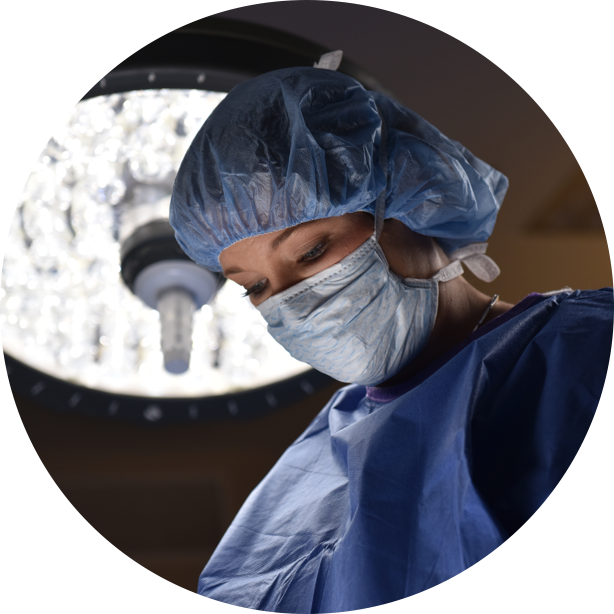
Chin Augmentation
Having balanced facial features depends in large part on the shape and size of a patient’s chin in relation to his or her nose. Chin augmentation, also known by its medical name of genioplasty, is an elective plastic surgery procedure for people who want to improve the balance and symmetry of their face.
Although it is often confused with menoplasty, which is chin reduction surgery, the two procedures are not the same. Augmentation increases the size of the chin through surgical implants and other means. Its purpose is to correct disproportionately small chins and receding chins.
Isn’t it time to take the next step?
CONTACT US
UPMC Western Maryland Plastic Surgery
12502 Willowbrook Road, Suite 460
Cumberland, MD 21502
Hours of Operation:
UPMC Outpatient Center
23789 Garrett Highway
McHenry, Maryland 21541
Hours of Operation:
HELPFUL LINKS

Genioplasty Options
The plastic surgeon will perform one of the following types of chin surgeries based on the patient’s current level of facial balance:
- Jumping Genioplasty: In this procedure, the surgeon moves the chin forward by advancing the previously cut portion the entire length of the bone. This moves the advanced part of the chin to the top so it sits in front of the mandible. The transferred bone remains in place with screws and plates.
- Silicone Chin Implant: In this procedure, the surgeon makes an incision under the chin and inserts an implant over the mandible to add fullness to the chin. It is screwed into place with screws.
Regardless of the specific type of chin augmentation performed, the surgeon closes the incision area after making the necessary adjustments. The nurse will give the okay to go home once the patient’s anesthesia has started to wear off. However, he or she will still be groggy and will need a ride home.
Best Practices for Recovery from Chin Augmentation Surgery
It is normal for the lower lip to feel prickly or tingly immediately after the procedure. Many patients describe the sensation as similar to receiving treatment at the dentist. Bruising, swelling, and feeling like the chin is stretched are all normal as well. The patient may find it difficult to smile or speak for the first several days, so it is important not to do either one any more than necessary. It can also be challenging to brush the teeth due to bruising and swelling on the chin and neck. Moving slowly with the toothbrush and not opening the mouth any wider than necessary can help.
Patients who had the sliding genioplasty will need to consume only a liquid diet for the first 24 hours after surgery and a soft foods diet for several days after that. Meal replacement shakes help patients to get the nutrition they need while avoiding chewing altogether. Too much chewing too soon increases the risk of breaking open the incisions. Patients who received dissolvable stitches can expect them to be gone 10 days to two weeks after surgery. For non-dissolvable stitches, patients need to return to the plastic surgeon’s office to have them removed after about a week.
People who have had chin augmentation surgery should plan to resume normal activities after 10 days. They can also return to work at this point, although some are ready much sooner. Vigorous activity can be resumed two to three weeks after the procedure.

Schedule a Consultation

CONTACT US
UPMC Western Maryland Plastic Surgery
12502 Willowbrook Road, Suite 460
Cumberland, MD 21502
Hours of Operation:
UPMC Outpatient Center
23789 Garrett Highway
McHenry, Maryland 21541
Hours of Operation:
UPMC Western Maryland Plastic Surgery
Plastic Surgery With A Personal Touch
Western Maryland Medical Arts Center
12502 Willowbrook Road, Suite 460
Cumberland, MD 21502
UPMC Outpatient Center
23789 Garrett Highway
McHenry, Maryland 21541
